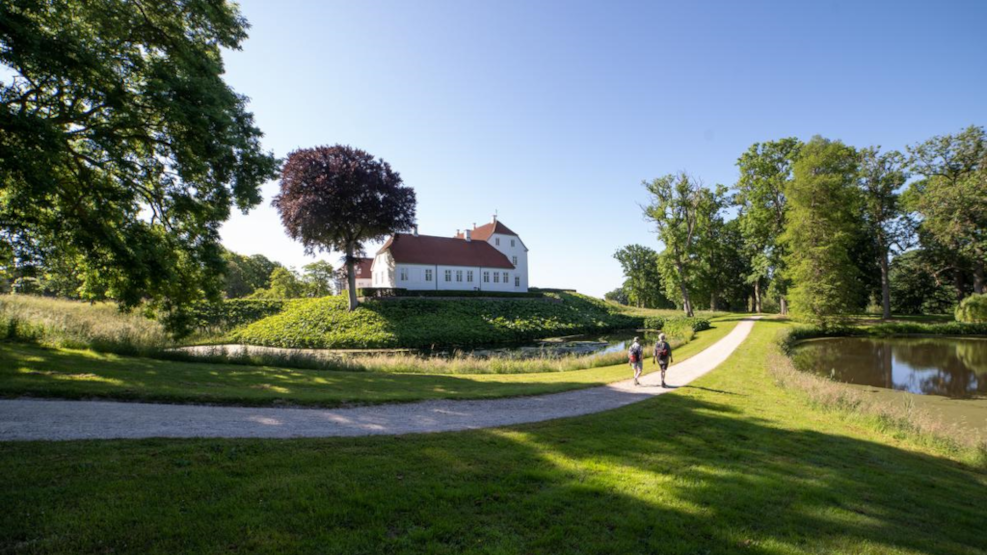
Palsgaard Castle
This beautiful manor with a rich history is situated in the holiday region of Juelsminde Peninsula, between Snaptun and Juelsminde. The castle itself is privately owned, but is located within a publicly accessible castle park, which ranks among the largest in Denmark.
A historical architectural masterpiece in beautiful surroundings
Palsgaard has a history that dates back to the 13th century. Originally, the buildings were located approximately 1.5 kilometers from their current position. The remnants of the original building's earthworks can still be visited in the landscape. In the 15th century, the structure was erected at its present location and has undergone several renovations since then. Visiting the actual castle itself is not possible as it is a private residence. However, the beautiful, old, architecturally designed castle gardens are worth a visit for anyone interested in taking a stroll in the fresh air. At Palsgaard, there is a small visitor center where you can learn about the site's history.
The historical building
Palsgaard's three-winged main structure, acquired its current appearance after a reconstruction in 1803-1805. It's a graceful and elegant whitewashed building featuring a tall central wing along with two lower side wings. The building's sturdy masonry, however, indicates that the core of the structure originates from the 15th-century medieval stone house, with the cellars dating back to that period. Originally, the building was surrounded by water and today is still partially encircled by moats.
Near the main estate, there are several intriguing old farm buildings in yellow-washed half-timbering. One of these is set up as a visitor center, hosting an exhibition about the site's history, and providing benches for visitors to enjoy a packed lunch.
Ownership Information
There is very little information available about Palsgaard's owners from the 13th to the 15th centuries. The first known owner was Jep Kalv in 1395. Subsequently, there were a couple of centuries marked by uncertain ownership and disputes. The most stable period arrived with the Reedtz family's ownership, spanning over 200 years, during which they made significant contributions to the local area. For instance, the town of Juelsminde is named after Niels Juel Reedtz. In the castle park, there is a memorial commemorating the Reedtz family's influence.
In the early 1900s, Palsgaard was purchased by Einar Viggo Schou, who was the director of a major margarine-producing company. At Palsgaard, he established a small factory where emulsifiers were produced. This later evolved into a larger industrial enterprise named Palsgaard, which has owned the estate since 1957.
Visit the Castle Park
You have ample opportunity to behold the castle and its many adjacent buildings on an outing to the beautiful castle park. Stretching across a vast area of 31 hectares, the park boasts six small lakes and a large number of rare trees and plants, imported during the 1800s by the castle's former owner. Each tree is labeled with a small sign indicating its species. Scattered throughout the park, you'll find a considerable number of artworks. The park has recently been expanded with a 10-hectare forest garden. Feel free to bring along your lunch and enjoy it at the visitor center/picnic house.
You can find more information about Palsgaard Castle Park on this website.
Note: The castle park is open to the public, but the castle itself is a private residence and cannot be visited. Visitors are requested to respect privacy and adhere to the signage within the park.
Finding your way to Palsgaard
Palsgaard is situated near the village of Hosby. From Gludvej, the main road between Horsens and Juelsminde, you'll find signs directing you to Palsgaard. Pass by the factories and old farm buildings on Palsgaardsvej, and you'll arrive at a parking lot by the park entrance.
The park is open from 8:00 am until sunset every day.
Moreover, the popular hiking trail The Coastal Trail Snaptun-Juelsminde also passes by Palsgaard.